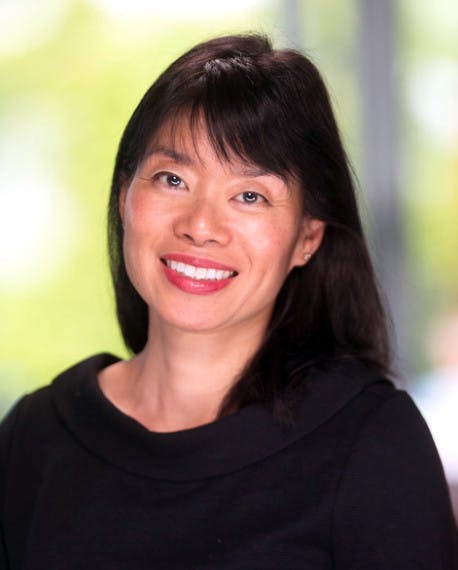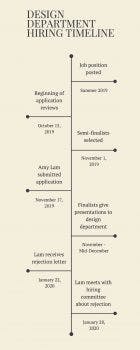The university claims it followed all existing equal opportunity guidelines

In November 2019, Amy Lam, a creative director and Asian American woman, applied for an associate professor position in Western Washington University’s design department. As she wrote in a Medium article, she met all the position requirements and was optimistic about her chances.
Lam wrote that all of the final candidates’ names were public, which gave her the opportunity to view their online portfolios and credentials. While she was confident her experience was on par, what bothered her, she said, was that all three of the chosen finalists were white men between the ages of 35 and 45.
According to the university, the hiring committee began reviewing applications on Oct.15 of 2019, and because Lam did not submit an application until November, her application was not reviewed until after the three finalists were chosen.

Lam said she received a rejection email in January and requested an in-person meeting with the head of the search committee to discuss her application.
“The conversation started out as pretty normal, pretty simple,” Lam said. “But as soon as I asked how many minority applicants there were, the entire tone of the conversation changed. It got very uncomfortable.”
Part of the reason Lam said she applied to Western was because of how inclusive the program sounded and because it would be a great opportunity.
“When I asked them, ‘How is it that three white men got to be the finalists?’ they just matter-of-factly said it didn't matter, that they did everything by the law. I was so angry.”
When asked to respond to Lam’s claims, Western’s Director of Communications Paul Cocke said the university is unable to comment about situations specific to personnel. Cocke was able to provide an official response which outlined the specific hiring process of the design committee.
This process, vetted by the College of Fine and Performing Arts, the Equal Opportunity Office, human resources and the provost’s offices, required the same materials from every applicant in order to rank each applicant based on the position’s desired qualifications.
“All applicants were required to address in their cover letter their commitment to working effectively with diverse students, faculty and staff, and to cultivating equitable and inclusive working and learning environments,” the response reads.
Before the hiring committee viewed any of the applications, members were required to undergo Equal Opportunity training and instructed to consider each candidate carefully in terms of how they would contribute diversity and inclusion into the classroom or workplace.
The committee decided on a rubric outlining qualifications, all agreeing on the weight and meaning of the criteria for the position, prior to opening applications to the public. The statement stressed that at each phase of this process, the committee chair was required to submit disposition codes, or indicators of why a candidate was not chosen, to human resources in order to proceed.
(Why the Search Advocate Program may be a better alternative to the current system. Read more here.)
According to Washington state law, it is unlawful for any hiring committee to “discriminate against or give preferential treatment to candidates based on race, color, ethnicity or national origin.” Because of this, all demographic-revealing information about each candidate was withheld from the hiring committee, the statement reads.
What Lam said disappointed her the most was that after the committee realized that all three finalists for the position were white men, they did not stop to reconsider the application process.
“The thing is, my application wasn't received until after they had already chosen those three finalists,” she said. “But that didn't prevent them from pausing that search — Remember, they didn't know I was a minority — they could have said, ‘Oh, here's a candidate; let's just pause this. Let's take a look at this one a little bit further.’ But they didn't.”
After her meeting with the committee chair, Lam filed a complaint with the Office of Civil Rights. In response, the office told her that because the university used a blind hiring process, the university did not discriminate against her, Lam said.
Lam said that, overall, this is not a sad story, but she hopes that the design department will take this opportunity to introduce greater faculty representation. She will be teaching at a university in Michigan, her home state, next year.





